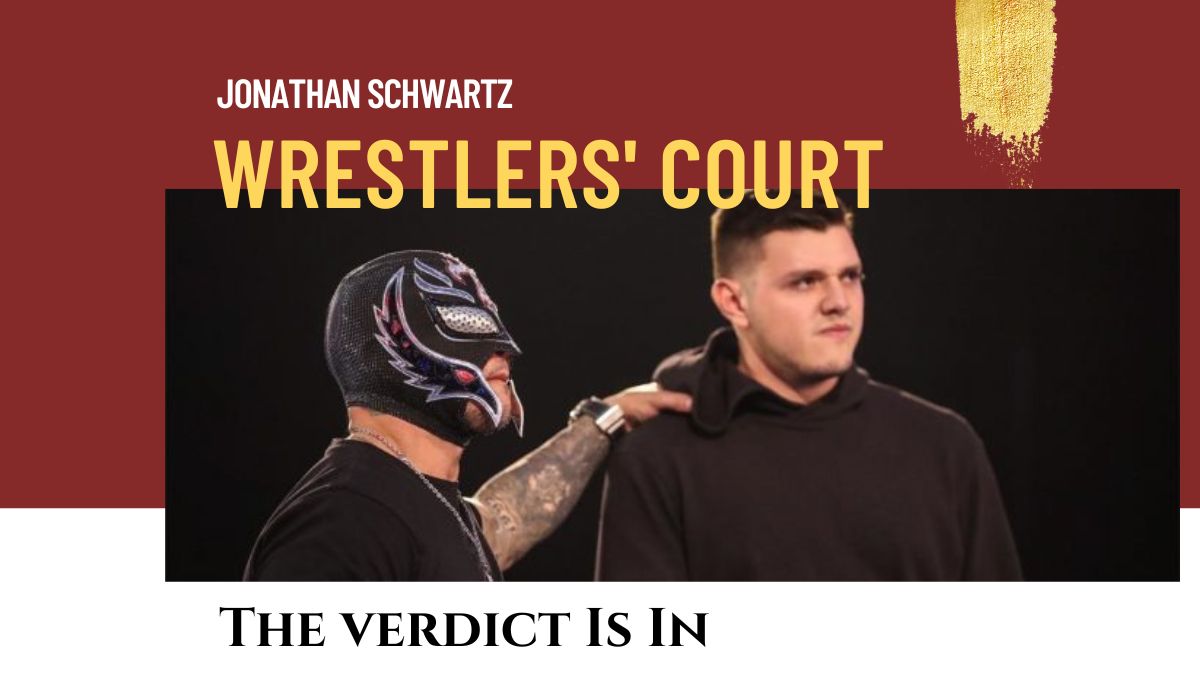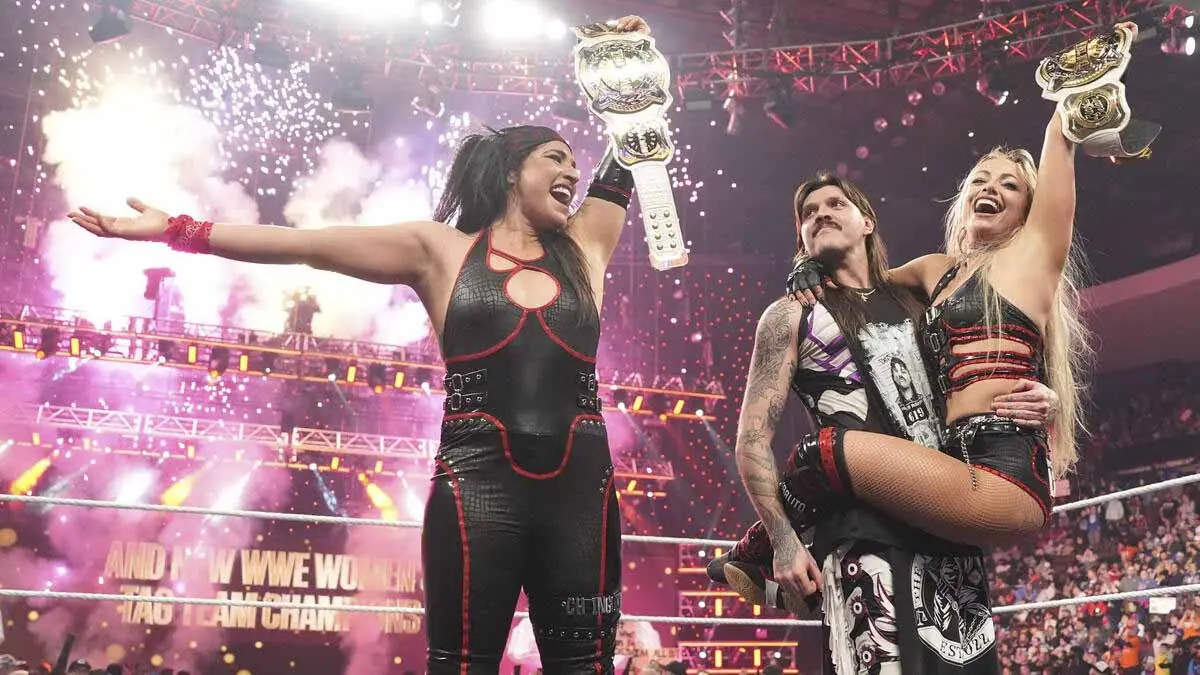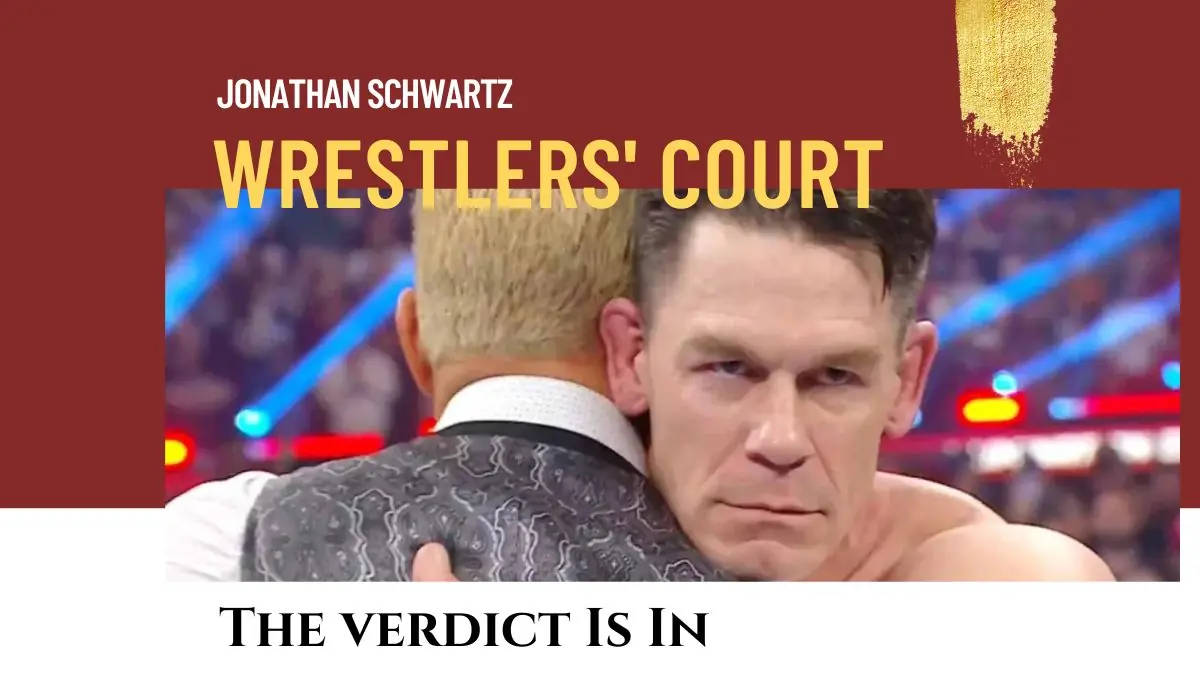In wrestling and other media, I often cheer for the villain.
Good bad guys are critical. A hero can’t exist without a villain standing in his or her way. Even better if said villain puts the hero in legitimate peril-creating risk that the hero fails at his or her quest or putting the hero’s life on the line.
It’s rare to see fleshed-out villains. In many franchises bad guys exist as serial opponents to be overcome. Real charismatic villains like Trump favorite Dr. Hannibal Lecter, Psycho’s Norman Bates, Inglorious Basterds’ Hans Landa, Star Wars’ Darth Vader or Harry Potter’s Voldemort stand out because they do more than put the hero over at the end of the story. Some of these characters, like The Matrix’s Agent Smith or One Flew Over the Cuckoos’ Nest Nurse Ratched are revealed as avatars of an oppressive system. Others, like Batman’s Joker, embody chaos.
These characters can prove so interesting they warrant their own stories. Original and subsequent creators try to fill out their origins across new media. Done well, you get movies like Joker and its forthcoming sequel, or Wicked which humanizes The Wizard of Oz’s Wicked Witch of the West. Done poorly, you diminish the characters’ transgressive impact. Worse, you risk turning them babyface.

Today, Monday Night Raw is anchored by two complex villains: Dominik Mysterio and Drew McIntyre. Both men exemplify classic heel tropes in completely different ways. As a fan of bad guys, they’re a joy to watch and have made RAW appointment viewing.
I’ve written before [Wrestlers’ Court: Fathers and sons (and mothers and daughters] about pro wrestling’s complicated on-camera approach to family, how parent-child or sibling relationships can be played up, fabricated or ignored. Some pro wrestling families have grown to encompass all these approaches over time (see the Anoa’i-Fatu clan, plus the Samoan-adjacent Maivias-Snukas-Fifitas).
“Dirty” Dominik Mysterio stands out.
Many wrestlers’ children take on their parents’ gimmicks whether they fit or not. They are pushed beyond their charisma and talent and fail. Occasionally there is enough talent spread across a family that each member can forge their own identity. Mysterio is something else. The best precedents I can come up with to explain his successful heel turn are Dustin Rhodes and Owen Hart.

Rhodes transitioned from WCW’s bland American Dream wannabe to flamboyant, homophobia-baiting Goldust. Like Dominik, Dustin Rhodes spent the first several years of his career in his father’s shadow, following Dusty through WCW, the Florida territory Dusty booked and briefly, the WWF to support his dad’s feud with Ted DiBiase. When Dusty retired from in-ring competition after his WWF run, Rhodes continued playing a generic Western good guy until he was fired from WCW in 1995. At the time there was legitimate discord between Dustin and Dusty. Dustin resurfaced in the WWF as Goldust and, despite his initial discomfort he leaned into the part and his career took off. Rhodes was motivated to develop his own wrestling persona, completely different from Dusty’s. Dustin eventually retconned his Goldust persona as a reaction to Dusty’s fame and their estrangement, in a RAW interview with Jim Ross, but the big break from his father’s legacy took place behind the scenes.
After a brief run as the Blue Blazer, Owen Hart rejoined the WWF as a babyface in 1991. He started in tag teams alongside Jim ‘The Anvil’ Neidhart, then Koko B. Ware, then as a lower-card singles competitor. In time he was brought into main event brother Bret’s orbit, only to turn heel on the Hitman at the 1994 Royal Rumble. Owen based his entire heel persona on his jealousy of Bret. He adopted a variation of Bret’s wrestling gear and sunglasses, and cultivated alliances with Bret’s betrayers. It was a great performance but left Owen with little to do outside the family feud. Owen kept the look and character even when he and Bret reunited as heels, and only started to change things up after Bret left for WCW (the pink and black were replaced by orange and blue, then yellow caution stripes, and later silver and red to coordinate with new running buddy Jeff Jarrett).

Dominik’s heel persona is predicated on his rejection of his father’s singular babyface character. Dominik has been part of pro wrestling since he was eight years old, when Eddie Guerrero claimed paternity as part of a SmackDown angle that is still referenced today. Dominik regularly drops Eddie Guerrero Easter eggs on his audience, from his mullet haircut and moustache, to recreating Eddie-Chyna vignettes alongside Rhea Ripley during the OG Judgment Day run. He debuted on WWE TV in 2019 alongside his father, skipping the usual NXT stint. While Rey turned his short stature into part of his world-beating babyface gimmick, Dominik is tall (billed at 6-foot-1) lanky and just kind of there. His offence paid tribute to the basic end of Rey’s move set, without the innovative flips and dives and acrobatics that made Rey stand out. As a babyface he was King of the Nepo Babies. He was pushed into a feud with a superior wrestler in Seth Rollins, then awarded a tag title reign alongside his dad.
I hated good guy Dom. When he finally turned on his father to join the rebuilding Judgment Day in 2022 I doubted he’d get over as a heel. More Gagne than Goldust, thought I.

Man, was I wrong. Dominik still comes across as average in the ring. He is frequently booked to lose. He also can’t open his mouth without getting booed out of the ring and crowds erupt when he gets his comeuppance from the babyface du jour. On RAW last week, said babyfaces were former Judgment Day stablemate Damian Priest and his ex-Mami Rhea Ripley.
Mysterio’s relationship with Ripley gave Dom his own identity, and it introduced a naughty, vaguely BDSM aspect to his character. His apparent subservience to Ripley was surprisingly kink-coded for a mostly-PG program. If they’d survived as a couple through RAW’s move to Netflix I wonder if he would have changed his ring name to Sub Mysterio.
But I digress.
Dominik Mysterio is not an imposing, oppressive wrestling villain. Neither was Eddie Guerrero. Dominik is a chicken. He calls out opponents who overmatch him, then runs away. He relies on other men (and sometimes women) to fight his battles for him. This mediocrity might be a con, as it was for Guerrero. If Dominik were capable, why would he have to cheat? Limiting Dominik’s in-ring presence furthers the delusions that fuel his persona. Mysterio thinks he is better and more independent than he is. He slights his father as a ‘deadbeat’ dad despite his introduction as a hanger-on. He claims that he wants to break free from Rey but he has ‘crashed’ Mysterio family get-togethers and engineered a tag team match against his father at this year’s WrestleMania, a full year after Rey defeated him at last year’s card to blow off their feud.
The turn of Dominik on Rhea Ripley at SummerSlam was impressive. Dominik, Ripley and Liv Morgan were all nominally heels throughout this program. Mysterio’s betrayal, which cost Ripley the RAW women’s title and aligned him as Morgan’s love interest turned Ripley babyface … but it also made Mysterio an even baser heel.

I’ve never been shy about my opinion that the best villains are those who think they’re heroes. Over the last few months I’ve cited Drew McIntyre’s work on RAW as some of the best pro wrestling villainy I’ve seen in ages. Caught in a three-way feud with CM Punk and Seth Rollins which goes back at least as far as Punk’s WWE return at last year’s Survivor Series, McIntyre has carried a complex feud with blistering promos, worked-shoot social media posts and Big Bad level violence.
McIntyre spent most of his career as a heel. He was brought into WWE as a preening pretty boy, anointed by then-WWE head Vince McMahon as the ‘chosen one’. As gimmicks go it was a kiss of death. McIntyre was a capable heel but didn’t need the expectations freighted on him by the Mr. McMahon character. Despite a few secondary title wins (including a tag team title victory alongside fellow future world champion Cody Rhodes) he never delivered on his main event promise and was released within a few years. He left WWE still a kid but came back as a man — and a dangerous one at that.
I’ve loved McIntyre’s work on the main roster since he returned. McIntyre came back as a stone-cold ‘Scottish Psychopath’. He backed up Dolph Ziggler in one of Ziggler’s last serious pushes in WWE. This heel run culminated with a match against Roman Reigns at WrestleMania 35 — which marked Reigns’ own return to action after a bout with leukemia. McIntyre dominated the match and played monster heel to try to get Reigns over as a babyface. Life and booking had other plans for both men. Over the next few months, McIntyre shaded his character with humor as he transitioned into a babyface, which was cemented at the Royal Rumble and a WrestleMania main event against Brock Lesnar. As a good guy McIntyre captured two RAW-brand WWE Championships totaling almost a year.

McIntyre’s babyface championship runs bear a Pandemic asterisk. While headliners like Reigns and Lesnar spent good chunks of COVID on the sidelines, McIntyre was a fighting champion without an audience. McIntyre won the WWE Championship in an empty Performance Centre and defended it immediately after against the Big Show — a match that even WWE seems to have forgotten. By the following WrestleMania, when a few fans were allowed to attend, McIntyre was already old news. He lost the title to The Miz of all people before another empty house. Miz transitioned the title two weeks later to Bobby Lashley, who defended the title against McIntyre at WrestleMania 37 then transitioned the belt back to Lesnar. A year-long reign forgotten in favor of the umpteenth chapter of Lesnar vs. Reigns.
In real life, McIntyre lost out on the perks of being champion: the thunderous pops as he entered the arena; the mainstream media exposure and talk show appearances; the house show percentages and merchandise sales. He was a paper champion, though not of his own design.
As a babyface titlist and later contender, it wouldn’t behoove McIntyre to complain. Wrestling heroes may be dim, but they’re men of action who are supposed to accept that they may live to fight another day. When champions are booked as near-mythological figures like Lesnar and Reigns, it turns wrestlers like McIntyre into also-rans, until they grow frustrated and demand their time back in the spotlight.
I’m hard-pressed to tell you when McIntyre became a true heel. He has spoken at length about the unfairness of his babyface title runs, and more recently about how Rollins and Punk (who has often been cast as a heel outside the ring by those who dislike him personally) have ruined title opportunity after title opportunity, even tarnishing his hard-fought victory over Rollins at this year’s WrestleMania and costing him his third World championship against Damian Priest. He’s lashing out at his opponents for their actions, and at WWE storyline management for their failure to maintain order.
McIntyre’s not wrong. He may have ‘broken bad’ but he is very much in the right. To me, this is the best kind of villain — the bad guy I can cheer for because he calls out the flaws in wrestling’s silly system. I hope he gets another substantial run and shows the world what he’s capable of.
My favorite villains are freighted with a backstory which explains and occasionally justifies their actions. I have long believed that very few people are genuinely, innately evil although current events may prove me wrong.
In the fictional universes I choose to visit, I appreciate when creators give us credible reasons why flawed but unremarkable people break bad. Dominik Mysterio and Drew McIntyre do exactly this, from radically different perspectives.
They’re among the best parts of RAW.
TOP PHOTO: Rey Mysterio and Dominik Mysterio in their early days n WWE together.
RELATED LINK




